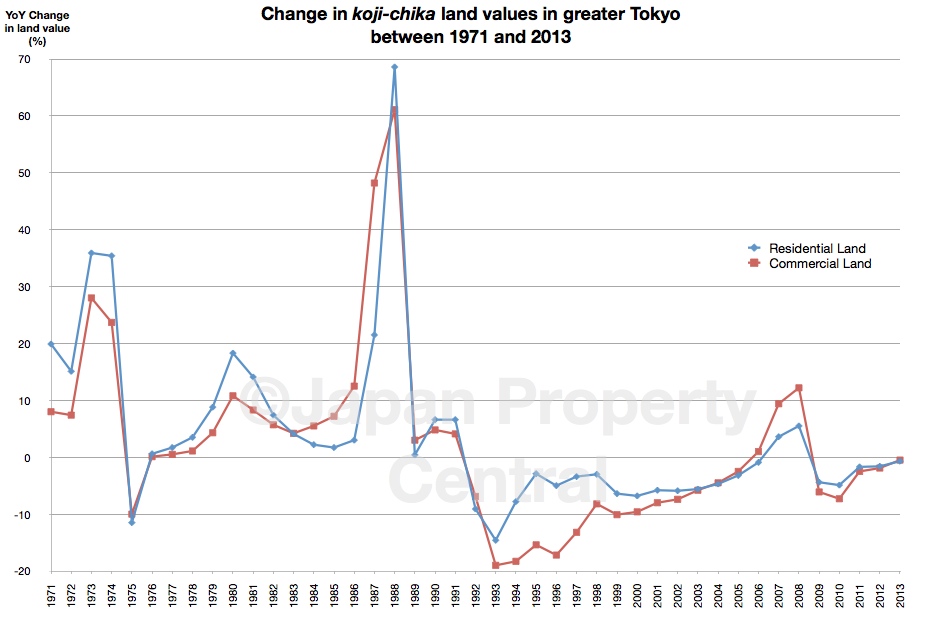
Unlike most other learning initiatives, this program deeply … Spread the loveOne of the questions that I am frequently asked is, what does a good teacher look like? I respond by mentioning my 10th-grade Biology teacher, Mrs. Minor, and … If a large percentage of students seem to be struggling with a topic, if it’s not a crucial topic you may want to consider dropping it.

You probably do have a roughly bell-shaped distribution of student abilities, but since in your exam the middle of the bell is at 85% or so, all of the high-ability tail inevitably get lumped together in the % bar. The final step is to take the square root of this number, which is 4.2. As a member, you’ll also get unlimited access to over 88,000 lessons in math, English, science, history, and more. Plus, get practice tests, quizzes, and personalized coaching to help you succeed.
The emergence of spontaneous coordinated epithelial rotation on … – Science
The emergence of spontaneous coordinated epithelial rotation on ….
Posted: Wed, 14 Sep 2022 07:00:00 GMT [source]
Earlier, we established the normal distribution based on percentage. Let’s say that Ms. Halsey decides to use this method in a class of 100 students. Given the distribution percentages, (only 2% will get an A, 14% will get a B, and so on) she decides who will get what based on the scores. Used by professors and those who want to enforce the normal distribution, one popular methods of grading on a curve is when your actual exam score in comparison to others determines your final grade. It’s a method used when it is obvious that most of the students were unequipped to answer the question. While everyone will benefit from this type of curve, the drawback is that students won’t really learn from this mistake unless the teacher re-teaches them and then adds a similar question in the next exam.
This is the distribution that is used to construct tables of the normal distribution. That reorganization, though, and the underlying effort, will have much to do with reviving the American education system, and reviving a national love of learning. The Edvocate plans to be one of key architects of this revival, as it continues to advocate for education reform, equity, and innovation. Spread the loveThe Talent Search Initiative has as its aim; the identification of high-performing students by organizing specific tests. Different avenues are then provided for these students to channel their …
If a large percentage of students answered questions on a certain topic correctly, that is great! Your choice of textbook combined with your presentation is making it so that they can absorb the information very well. You have a huge opportunity to go beyond the basics, if you have the time. If you can’t go into more details, you could also go into a more practical direction and talk about how to apply these concepts. @A.W.Grossbard The point of an exam is not necessarily to challenge students. Especially in lower level classes it is to determine whether they have met a certain level of comprehension that is adequate to move on to the next course without being totally lost.
I’m not sure we should be calling people at the lower end of the bell curve as poor performers. Some of those students may have performed really well to get those grades. The progressive grades we’ve proposed at Heads’ Roundtable would solve some of these things. But I do worry that some people almost literally don’t think it is fair for some children to do better than others…in any assessment regime.
Bell Curve Grading
You could also get a small standard deviation if all of the scores clumped together on the other end, meaning most of the students failed the test. Again, this could be because the teacher did a bad job explaining the material or it could mean that the test is too difficult. One of the most important measures of dispersion is the standard deviation, which measures the typical difference that can be expected between individual values and the mean value.

My students are, almost across the board, bright, hard-working, and appreciative – and they learn a ton in their four years here at SUNY New Paltz. 99.7% of data will fall within three standard deviations from the mean. This means there is a 99.7% probability of randomly selecting a score between -3 and +3 standard deviations from the mean. 95% of the values fall within two standard deviations from the mean. This means there is a 95% probability of randomly selecting a score between -2 and +2 standard deviations from the mean. 68% of data falls within the first standard deviation from the mean.
Maths
Most values will be scattered within one deviation above or below the mean. A small standard deviation indicates that values in the data set are mostly clustered together, while a large standard deviation indicates dispersion across a wider range. Numerical data sets can be summarized and analyzed using descriptive statistics, meaning measurements of certain essential features of the data set.
- Maybe it’s because Ms. Halsey’s questions were too easy, or her class is the special class for honor students, so they need to be challenged according to their level.
- Relations with seriously pushy parents might also become more ‘interesting’ given that there are plenty of horror stories around demands re.
- Challenging students to do research on their own and present their work will naturally bring out the best in talented students, and it could be very valuable practice for their careers .
- My main objection to the Attainment 8 and Progress 8 approach is that it tries to create data to measure the success of schools by averaging their scores across all subjects.
- We need to give value to the learning experience in all its diverse glory, going far far beyond what can be measured in tests.
- Conversely, if all students perform poorly relative to a larger population, even the highest graded students may not succeed to meet standards.
It would be daft to set Grade 1 so high, no-one could pass or so low that anyone could pass. It represents a fair challenge – a standard – for beginners. Even within the cohort of Grade 1 entrants, there is a range. Some fail, some pass, some get Merit and some get Distinction.
Calculating Standard Deviation
Let’s say Ms. Halsey finished grading her class’ exam and found that most of the students got C’s, fewer B’s and D’s, and only one or two A’s and F’s. Using these statistics, she knows the tests she designed did its job and was just the right amount of difficulty for her class’ level. Finally, two of my daughter’s three targets for Y6 next year are essentially about exam technique but given some near-perfect recent exam performances those targets are absurd. It’s already depressing to see state assessment trumping learning at this age, but I expect it will get worse when schools are in the thick of new-improved assessment/accountability. However, it is a good message to give our students that they could be first or last when they started – it is still all to play for as they move through the school.
For bell curved educationple, about five to seven extremely bright pupils with comparable skill … Spread the loveAre you looking for ways to teach students to take care of their personal property? Observe the learner while they are performing schoolwork … Spread the loveThis program assesses 15-year-old students schooling in countries that form part of the Organization for Economic Cooperation and Development. The evaluated skills include science, math, and reading.
To this very thorough answer, I’d https://1investing.in/ that a bimodal distribution such as OP observes is, in my experience, pretty usual. And, if you must use a single measure of central tendency, median, not mean, is the right one. There are special statistics to check if your exam questions are “good” questions. Most academic institutes should have an education affair office that can help you. I find that after 3-4 times teaching the same course the patterns would start to emerge.
If the data does not resemble a bell curve, researchers may use a less powerful statistical test called non-parametric statistics. Deb Russell is a school principal and teacher with over 25 years of experience teaching mathematics at all levels. You’d also improve academic performance, minimize the disruptive anti-social behavior, and the kids as well as the teachers will actually learn to enjoy the process of learning again. Another flaw in the bell curve is that it only looks at final outcomes. The full bell curve should include a so-called “long tail” to the left for lower grades, indicating students that withdraw before completion of the course. However, I am not sure that looking at a grade distribution is the best way to get a feel for how students are reacting to the coursework.
This means there is a 68% probability of randomly selecting a score between -1 and +1 standard deviations from the mean. We can standardize a normal distribution’s values by converting them into z-scores. A normal distribution is determined by two parameters the mean and the variance. A normal distribution with a mean of 0 and a standard deviation of 1 is called a standard normal distribution.
What’s up with the Ivey bell curve? News westerngazette.ca – The Gazette • Western University’s Newspaper
What’s up with the Ivey bell curve? News westerngazette.ca.
Posted: Tue, 22 Mar 2022 07:00:00 GMT [source]
There is little statistical justification for combining them, and because the number of students taking any given subject is not considered in the average, the result is suspect. For example, a +0.5 history result and a -0.5 physics result will yield a 0.0 average, even if 100 students took history and only 10 physics. Averaging subject grades produces a mush that actually removes information from the numbers and leaves only data. Very little can be learned about a school whose A8 or P8 scores are +0.5. Clearly it is doing some things right, but it could be abysmal in others. Grading on the bell curve system can and does impact grades.
Try it now It only takes a few minutes to setup and you can cancel any time. Interactive resources you can assign in your digital classroom from TPT. Enter your email address to follow this blog and receive notifications of new posts by email. Why should that be acceptable , ‘that some students will always do better than others’ it would be far better to focus on individuals achieving their own goals . Interesting to see the lack of correlation between achievement in the selection test and outcome at GCSE.

However, also because of the curve, there will be some students who will still have failing marks regardless of the curve. The maximum 15 additional points to Abigail’s score might give her a 100, but for Zoey who has 40 points, the additional 15 points still puts her at an F. Let’s say that Ms. Halsey’s class mostly got A’s and B’s. Assuming no one cheated, the test did not fulfill its purpose because it wasn’t challenging enough. Maybe it’s because Ms. Halsey’s questions were too easy, or her class is the special class for honor students, so they need to be challenged according to their level. On the other hand, if most of the grades were on the lower end of the curve, then she knows she made the test too difficult.
If it appears that most of the students got a certain question incorrectly, a teacher can choose to remove that question from the exam. Instead of reducing the total number of questions in the exam, the teacher can simply add an additional point to everyone’s final score. Those who got the answer right will also be given an extra point to keep it fair. If a teacher gives a hundred-item exam and you get 80 questions right, you get a B-. It’s pretty straightforward – until your teacher decides to grade on a curve.

While the losers will expect to hang on for dear life at the bottom of the societal hierarchy. And to question the authority/validity of this system is considered stupid, unpatriotic, or worse. In large measure the hierarchy that’s set in place during these early stages of education remains intact and is reinforced right on through high school graduation complete with the naming of a class valedictorian.
- If the graph is skewed or irregular, it can indicate that there is a problem.
- So a grading distribution from a class of students in a mastery-taught class looks a bit different from a distribution that pertains to a relativistic class.
- Some do it exceptionally well; others fail to engage after a certain level, but will attend for social reasons; the odd subject or activity they enjoy, or sadly, because it’s better than being at home.
- Reactions to the phrase, “I’m grading on the curve” are often mixed.
When variables are graphed and a bell curve appears, this is often taken to mean that the variables were within normal expectations, and that they are behaving in a predictable manner. If the graph is skewed or irregular, it can indicate that there is a problem. In finance, the normal probability distribution and the bell curve also play significant roles. Financial analysts frequently rely on the normal probability distribution in analyzing the returns of securities. The assumption of a normal distribution is fundamental in many pricing models that intend to predict future returns.
